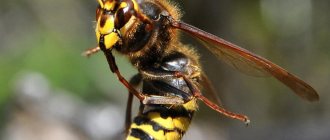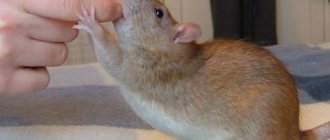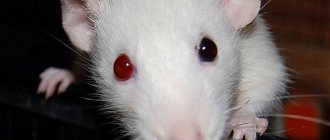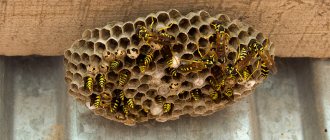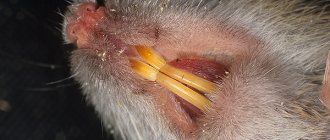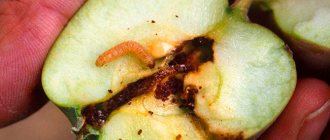2 269
1 comment
4
Author:
Rasskazov Pavel.
Reading time: 3 minutes
There are often cases when a rooster shows aggression towards a person. As a rule, this feature of the bird begins to appear at the age of about 9 weeks.
The reasons for bullying behavior can be different, the main ones are:
- character traits;
- an attempt to win a place at the waterer, feeder or other place in the chicken coop;
- disadvantages of content : too bright or dim lighting, too much crowding, annoying sounds;
- small number of chickens in the flock;
- the presence of a competitor - another rooster in the family.
Why and why the rooster pecks and attacks
The leader of a whole harem of chickens can attack completely unexpectedly. And such attacks often result in painful injuries. The aggressive bird, with the help of its beak and spurs, is capable of biting and even pecking enemies until they bleed. There is also a high risk of abrasions and bruises on the legs, the treatment of which may take a long period of time. In most cases, birds can pounce and peck from above or from behind. They are a great danger to children because they try to peck out their eyes.
Rooster
Among the common reasons for attacks, experts identify two main ones:
- Cock attacks can occur due to the fact that the individual was acquired as an adult. Her character was formed, the rooster is unable to come to terms with the authority of the newly-made owner.
- Perhaps in the past the bird was oppressed by people or strong brothers, which left an imprint on the character of the rooster. The bird's attitude towards its owner or brothers becomes hostile, it pecks and rushes at them.
Experienced poultry farmers, who know what roosters are afraid of, advise purchasing only those chickens that are ten days old. This nuance is due to the fact that newborn chicks need incubator care, and older individuals can get used to a new place from the first weeks of life. In the future, it will be very difficult for them to adapt and get used to the new environment.
Ten day old chicks
Additional Information! In poultry farming practice, there have been cases of attacks on people by a rooster that had a completely calm disposition. To this day, the reason for such manifestations of aggression has not been established.
Bird attacks should never be ignored
If a bird shows attention and care towards other animals, then attacks pose a great danger to humans. If no methods of re-education help, you can always make a tasty broth from the birds. Buying the necessary medications to treat wounds received will cost several times more than buying a new rooster
Buying the necessary medications to treat wounds received will cost several times more than buying a new rooster.
There are many reasons why a feathered creature attacks other animals. With the variety of breeds on the farm, pet collisions occur quite often. Animals may lack free territory and begin to divide it. They may not have enough moisture or nutrients. Rooster attacks occur due to an unfavorable environment, as well as the individual characteristics of the animals.
rooster attack
The need for a hen for livestock
Whether it is necessary to place a hen in a chicken coop depends on the wishes of the poultry farmer, as well as on the characteristics of the breed. Breeding chickens in a natural way means there is no need for incubation and round-the-clock supervision of young livestock. So, let's look at what to do if a chicken clucks.
To select a suitable hen, it is necessary to observe the livestock for two days. Complaisant individuals with a calm disposition are considered the most suitable for hatching. The rest of the chickens are subject to the elimination of such an instinct at the first manifestations.
The need for a hen for livestock
The bird selected for incubation and further breeding is placed on a nest with unhatched new stock.
If a bird that is not intended for hatching clucks frequently, drastic measures must be taken. You can wean a chicken from hatching its offspring by following a number of recommendations from experienced poultry farmers.
Why do roosters fight?
The main mechanism for maintaining the hierarchy is periodic fights, which occur mainly between males. Females do not participate in cockfights, but they show aggression towards individuals of their own sex. This is also an element of establishing hierarchical stability of the pack. Domestic chickens have retained the basic elements of the behavior of their wild relatives.
How and why roosters fight
Roosters fight mainly at an early age, when they acquire secondary sexual characteristics. The fights continue until a leader is determined.
In order to understand how roosters fight, it is enough to determine what is their main weapon.
In a fight the rooster uses:
- Beak;
- Legs, especially bone growth - spur;
- Breast;
- Wings.
Before fighting, males may perform a fearsome dance. If the enemy's demonstration of aggressive intentions does not confuse him, then a series of blows with the chest, wings and spurs follows.
The beak comes into play the moment the fighters enter the clinch. In this position it is difficult to use the spurs, so only the beak and wings work. As a result, both opponents may have their combs and beards pecked off.
Why do chickens fight?
If the reasons for cockfights are the division of power, then it is not clear why chickens fight. Fights between females in flocks are usually little noticeable, because this is not typical for them. But there are situations when one chicken begins to peck another.
Chickens peck each other for the following reasons:
- When new individuals enter the chicken coop. This is a ritual for establishing a new hierarchy.
- In conditions of increased pack density. Particularly active fights occur between chickens of the same age. In this case, fights can lead to mass cannibalism.
- When a leader rooster has not yet appeared in a flock of young individuals.
- Same-sex pack. If there are no roosters in the flock, then the hens can “put themselves forward” to the role of the dominant individual. A hen can never unite a flock the same way a rooster can. She does not have the necessary signaling functions for this, but the chicken can perform some management functions.
What to do if roosters fight
In order to reduce tension in the coop, you need to understand why it formed.
If the density is increased, then it must be reduced by expanding the area of the chicken coop. You can organize the space in such a way that the cockerels and hens who find themselves outsiders can escape or even fly away from the epicenter of the battles.
There are several more techniques for pacifying the most violent males and even females. One of them is aimed at shifting attention, and the other is aimed at reducing hierarchical status.
In order for a rowdy rooster to stop beating his neighbors, you can put a mirror in the chicken coop, in which the most cocky rooster will find a worthy opponent, that is, himself.
You just need to make sure that the fighter is not seriously injured.
To reduce hierarchical status, you need to anoint, for example, the back, wings or neck of the rooster with green paint. If a pugnacious bird has a dark color, then the paint should be light. You need to make clearly visible marks, and not smear paint all over your body.
These marks will attract hens, for whom the rooster fights.
However, this attention will not correspond to the respect and obedience that should be expected from females. Chickens will walk around a strange rooster and look at its back or neck. Since the rooster himself will not notice changes in his coloring, this behavior of the hens will demoralize him and will temporarily discourage him from fighting.
Since the rooster himself will not notice changes in his coloring, this behavior of the hens will demoralize him and will temporarily discourage him from fighting.
Any management of a flock of chickens should be aimed at establishing stability. And for this you need an established hierarchy and a minimum number of roosters. This will reduce livestock losses from fights and pecking.
Hereditary poultry farmer, owner of a poultry farm, graduated from St. Petersburg State Agrarian University with honors, author of articles in specialized publications
Why raise chickens in the country or in the garden?
Many experienced and novice poultry farmers often ask themselves this question. Most people know that domestic laying hens produce tastier eggs. But they don't understand many other benefits. Here are some of the most common reasons why chickens are great in your backyard.
- Easy care of chickens with little investment in something useful for the family.
- Their eggs are fresh, tasty and nutritious
- Chickens happily eat weeds after weeding; in the summer this will be their main food and source of vitamins. Very little grain and feed will be wasted.
- Chickens will produce the best fertilizer in the world! And they will fertilize your garden and garden for free. You just need to learn how to properly apply chicken manure to the beds, under bushes and trees.
- Chickens and roosters are fun and friendly birds with personalities. Each member of the chicken family has its own character and behavior. How interesting it is to watch them!
- Chickens can be beloved pets for children of all ages, including children with disabilities. And how happy our grandparents are with them!
What to do if a rooster pecks and attacks: methods and rationale
If a rooster shows aggression towards people, then no one will like this behavior. Without immediately resorting to drastic methods, you can try to reason with him using proven methods, many of which were used by grandfathers and great-grandfathers.
How to stop a rooster from lunging at people
Advice from poultry breeders is varied. Some of them are quite peaceful, based on attempts to bring the rooster to reason, to show him the real owner in a humane way. Others are aimed at physical impact, sometimes quite cruel, even taking life.
What to do if the rooster pecking? The main thing is not to show your own weakness. Analyze these points:
- will there be enough patience and strength for re-education;
- how expensive and valuable is the head of the chicken coop;
- Are there any other roosters among poultry that can replace the fighter?
Based on the answers you receive, use any of the following tips.
Loyal ways
There are several options for action when it is necessary to wean him from incorrect behavior without the help of force:
Special treatment. Having placed the rowdy in a separate enclosure, you should talk to him more often and feed him. The absence of sudden movements and the calm tone of the owner have a calming effect on the roosters, they stop pecking. Having returned the leader to the chicken coop, you need to continue feeding or let him out of the room while the eggs are taken away and the cleaning done. Walks behind the fence. The rooster should only be walked in the enclosure, without allowing it to move freely around the yard. They harvest the necessary grass themselves and feed it to the birds through the fence. Hunger strike. To discourage the rooster from pecking, immediately after the attack it needs to be moved into a separate pen. Do not feed or spare the bird for 2–3 days. The method is effective, for stubborn people you can repeat it several times
It is important not to overdo it so that the bird does not start to get sick. If a rooster tries to peck only one person, it is he who should offer food to the punished person after the hunger strike
Then the object of aggression will be perceived as a savior. Temporary isolation. You need to make a strong box and put it on the rooster who is about to attack. Then no one will interfere while collecting eggs. Before leaving, remove the imaginary cage from the bird. Pheasant glasses. The opaque plastic devices used to train pheasants to stop fighting are also suitable for roosters. The structure is secured with a pin, which is threaded through the nostrils. It does not allow the bird to see what is happening ahead. If the object of aggression is not visible, there is no reason to attack.
Cardinal methods
When there is no hope left to wean the rooster from pecking and attacking people without using physical force, you need to act tough:
- Water procedures. Members of the chicken family do not like to swim; immersion in water will cool an aggressive bird and cause it to change behavior. To wean a rooster from the bad habit of pecking, they practice dipping their head into a container of cold water for a couple of seconds, 3–5 times, so that the bird does not choke, or completely immersing it in a barrel. Dousing with a bucket or hose helps a lot.
- Beak trimming. You can carry out the procedure yourself, observing safety precautions, or go to a veterinary clinic. The beak is trimmed using hot blades, laser or infrared light. A humane alternative is feeding rough food, which will gradually wear down the beak.
- Attack. A counter attack will take the rooster by surprise, show him the main thing, thereby cooling the bird's ardor. It is useful to respond to attempts to peck with a fly swatter, hose, stick or hand. To begin with, you can hit it lightly; an ununderstanding bird should be hit more painfully, but without causing it serious harm.
- A lesson from my brothers. If there are stronger birds on the farm that can teach a fighter a lesson, it is recommended to place the bird with them so that he can experience the role of the victim from his own experience.
Why does the rooster peck
The attacks of the leader of the chicken family are painful. A raging bird injures until it bleeds with its beak and spurs, leaving bruises and abrasions on the legs that take a long time to heal. Roosters are capable of pecking out eyes; they often attack from behind or from above; such aggressors are especially dangerous for children.
It's all about the established hierarchy
Usually the head of the hen house is the rooster who watches over his harem. The male controls the process of watering, feeding and provides protection to the chickens. If the authority of a leader is shaken in the presence of chickens, he ceases to be such. Therefore, it is not recommended to punish the bird.
Just interesting: in the middle of the last century, a headless rooster managed to live for more than 12 months.
Chickens attack newcomers, young and weakened male tribesmen.
What to do with wounds?
Of course, the affected individual is isolated. For example, it is placed in a separate cage or in a section prepared for it. Wounds are disinfected with iodine, glycerin, brilliant green. Let's choose one thing. But a fully recovered bird returns to the flock.
At the same time, the root cause of the problem is determined and eliminated. First of all, feeding conditions, lighting conditions and other microclimate parameters are optimized.
Just wondering: in the 15th century. they judged a rooster that surprised him by laying an egg.
If attacks on the rooster continue and nothing can be done with the aggressive bird, the latter is sent for slaughter.
Tips for organizing a turkey poultry farm to prevent fights
It also happens that Turkeys fight when they are indoors or in a chicken coop. what to do in this case?
Pecking of eggs and the youngest animals indicates that the actual square footage of the room is not spacious enough for such a number of animals. The worse the turkey poultry is equipped, the more conflicts and fights will arise.
The first thing you need to understand is the consequences, because preventing the causes is easier than the consequences. Young and not yet fully emboldened individuals will suffer, this can be learned from bruises, abrasions, hemorrhages and multiple hematomas on the bird’s body. In principle, there is nothing wrong with this, but frequent such fights can affect the growth and quality of the animal’s meat.
- Per 1 square meter you can place a maximum of 2-3 females, 1-2 males and no more than 5-6 small growing turkey poults.
- Perches and various perches will help accommodate the maximum permissible number of birds in a small but high barn. The best option would be to calculate the number of logs and consumables within 30 centimeters per adult.
- For transportation or temporary housing, cages and metal sieve boxes can be used. The minimum size is considered to be 40x60x50; the larger and more spacious the cage, the more comfortable the Turkeys will feel.
How to deal with an aggressive person
The main task in communicating with an aggressive person is to avoid conflict and not succumb to provocation. It’s good to go on the defensive - if possible, silently leave the room or at least remain completely silent. Let the aggressor speak out. The decisive factor in this case will be the attitude with which you will have to listen to insults addressed to you. You need to know for sure: the aggressor is an unhappy person, problems tear him apart, causing the release of negative energy.
Under no circumstances should you respond with anger to anger, or rudeness to rudeness. You should not engage in conversation until the unfortunate person has let off all the steam. After this, you should politely ask him not to talk to you in this manner anymore. At the same time, use body language: stay as straight as possible, look your interlocutor straight in the eyes, emphasizing with your entire appearance that you have no fear of him, but you are not going to offend him either. In the end, each of us has the right to make mistakes.
Gentle methods against cock aggression
A gentle and humane way to stop the rooster from pecking is to try to make friends with him. Males often show aggression due to the fact that they have little contact with the farmer.
First of all, it is recommended to place the rebel in a separate spacious cage. Approach and talk to him every day in a calm, confident voice. The main thing is not to make sudden movements. And give a treat every time.
Soon the male will get used to the owner and begin to trust him. This will prevent manifestations of anger.
Defense by attack
Another effective way to stop a rooster from pecking is to show him who’s in charge. When communicating with a rebel, you need to behave confidently and even a little arrogantly.
It is important to look the bird in the eye at all times and not look away. This psychological technique works no worse on roosters than on humans.
It is necessary to show the rebel that they are not afraid of him, and if necessary there will be resistance.
Alternative: Try to intimidate the rooster. It's simple. When entering the chicken coop, there is no need to wait for an attack. You need to attack first - start chasing the bully.
Such actions will discourage the rooster, since he is used to a different reaction. To consolidate the result, intimidation must be carried out several times.
Often bright or too bulky clothes act as a provoking factor. A bird may perceive such attire as a formidable plumage. And he will try to protect his territory and herd by all means.
If the rooster starts pecking, you will have to visit the chicken coop in clothes of neutral and muted tones. In this case, the bully will get used to the farmer. And he will stop constantly clinging to him.
If the methods described above do not help, you can experiment with alternative options.
An effective method of pacifying aggression in young roosters is the installation of a large mirror on stable legs.
A bully, seeing his reflection, will focus on it. He will have no time to pester the owner
Another possible option is to paint the wings and tail of the bully with green paint. The bright color will attract other birds to the rooster. And he will be forced to constantly defend himself. He will no longer have the strength or desire to attack the farmer.
Pheasant glasses
This device was developed specifically for pheasants. When in close cages, they often peck at each other.
The glasses are secured with a special plastic pin. It is threaded through the nostril. Therefore, the rooster will not be able to remove them on his own.
Hunger strike
A more severe but effective way is a hunger strike. Many experienced poultry farmers practice this method. They keep the fighter isolated and hungry for 2-3 days.
The male should be placed in a cage immediately after the attack. Otherwise, your efforts will be in vain. During punishment, you cannot visit or talk to the fighter. Hunger strike is considered an effective method. And it usually works the first time.
We suggest you read How to make hawthorn syrup at home
If you plan to punish a rooster with a hunger strike, you need to leave a container of clean water in the enclosure. This will prevent dehydration and further health complications for the male.
Read about another situation in the article “What to do if roosters are constantly fighting.”
Beak trimming
If the male continues to behave aggressively and attacks the owner, the bird's beak is trimmed.
Laser: the procedure is carried out exclusively in a clinic with the availability of appropriate equipment. This method of beak trimming is considered less traumatic and painless. But you will have to pay a lot of money for the procedure.
Infrared light: this treatment of the beak causes it to fall off on its own after a while. The procedure can be carried out only in the first months of the rooster’s life. It is painless and harmless.
https://www.youtube.com/watch?v=subscribe_widget
Feeding with special food. The fighter can be switched to special roughage, which will lead to gradual wear of the beak. This method is humane. But it takes a long time. And drink a lot to keep the gastrointestinal tract working.
Sometimes, even after cutting the beak, the bird continues to attack the owner and inflict injuries with its spurs. In this case, there are only two options left: kill the rooster for soup or give it to cockfights.
As practice shows, many owners cannot kill a rooster. And they give the bully to the man involved in cockfighting. This way you can save the bird’s life and remain profitable.
Information on the topic is given in the article “On cockfighting.”
Method No. 8 - beak trimming
Not the most humane, but effective way. True, it will not save a bird from sharp spurs. Some experienced poultry farmers trim the beaks of their birds themselves. It is better to conduct independent experiments when the chickens are still very small and do not experience pain from cutting off a piece of their beak. For adults, this procedure is recommended only in emergency cases or with the help of a veterinarian.
You can trim the beak yourself
We will consider below what means are used to trim the beak.
Beak trimming with hot blades
The rooster's beak is trimmed with red-hot metal blades as an adult. This method is advantageous in that the hot blades easily cut the beak and immediately cauterize the incision site.
Laser beak trimming
The preferred method for trimming a rooster's beak. The laser works more accurately than blades, annealing the beak accurately, almost bloodlessly and painlessly. There is only one minus added to the list of its advantages - the high price.
It is impossible to distinguish between blade and laser trimming externally.
Beak trimming with infrared light
Only works on the delicate beaks of chicks sitting in the incubator. Treatment of the tip of the beak with infrared radiation leads to rapid loss. The main advantage of the method is that the birds do not feel any pain and the operation takes place without consequences for the health of the bird.
Chicks have part of their beak cut off while still in the incubator.
Washing the beak with special food
Do you hesitate to experiment on your feathered charges at the expense of your health? Don't worry, there is a humane way. It consists of temporarily transferring the rooster to roughage, on which the beak will gradually wear off.
Below is a table of the pros and cons of each pruning method.
| Way | pros | Minuses |
| Trimming with hot blades |
|
|
| Laser trimming |
|
|
| Infrared cutting |
| |
| Beak abrasion by hard food |
|
What to do if you are injured after a bird attack
If a rooster pecks, you need to wash the wound with laundry soap. Or treat with an antiseptic.
If the wound is large, its edges must be disinfected with hydrogen peroxide or brilliant green. Then treat with antibacterial ointment. Finally, apply a sterile bandage.
If the wound is shallow and all necessary measures have been taken, it will soon go away on its own. It is imperative to consult a doctor if the affected area is very painful. And the symptoms do not subside for several days.
In conclusion: the methods listed above are effective. But before you start raising a bird, it is recommended to find out why the rooster attacks. And, if possible, eliminate the original source of the problem.
Dear fellow poultry farmers, have you ever had to wean roosters from aggression? Please share your experience with our readers. Special thanks to everyone for the repost and 5 stars.
Every experienced poultry farmer knows what a big role the rooster plays in the farm. Leading a whole harem of chickens, he protects them from various dangers that may await the birds outside the chicken coop. In some cases, the bird believes that the owner-farmer may also be a source of danger.
A rooster can attack a person and, using its sharp beak and spurs, peck and tear the skin into blood. It is quite possible for an adult to repel an attack by a rooster, but for small children it is very difficult to resist a bird, and this can lead to serious injuries, including loss of eyes. In such a situation, you need to familiarize yourself with the recommendations on what to do if a rooster pecks.
The comb turns black
Poultry's combs can be considered indicators of their healthy or unhealthy condition. A good rooster or hen has a natural head decoration of a bright red color. If the skin growth on the head darkens, it means the bird is unwell.
Blood stagnates in the ridge, followed by necrosis. At first the scallop turns blue, later it turns black. This happens for the following reasons: vitamin deficiency, frostbite, bird flu, pasteurellosis or Newcastle disease, as well as in the presence of wounds that have become infected. You should observe the bird, understand from the symptoms why and what the rooster gets sick with. Or call a specialist for an examination and immediately take medical therapy.
What did you see in your dream?
Roosters and chickens are dreamed of for various reasons, and dreams in which you saw a bird from the outside are especially interesting. This means that the dreamer did not touch the rooster in the dream and did not have any contact with it.
Remember what the cockerel was like, what he did - and decipher the dream.
1. As the dream book says, a rooster in a dream, seen from the outside, is a sign that honor and a high position will soon await the dreamer.
You will be recognized for your merits and will experience prestige and respect. Be consistent and don’t lose face!
2. If in a dream you only heard a ringing rooster crow, this is a symbol of insight, awakening.
Some new, dormant forces will be revealed in you, perhaps you will discover a talent in yourself or understand something very important about yourself. Awakening can have different meanings, and what exactly it will be in your case, time will tell
3. The crow of a rooster, which was hoarse in a dream, means that you have to spend a lot of your own strength and energy to achieve a big goal.
But if you show strength, you will receive recognition and achieve your goal.
4. If you dream of fighting roosters or hens that cackle loudly and fight, this clearly indicates the fact that in the near future you will witness a quarrel between your competitors or opponents.
How this will affect you personally is unknown, but the interpreter advises not to interfere, and try not to add unnecessary fuel to the fire, so as not to get involved in a serious conflict. Better stay away.
5. Such a dream, in which a rooster was sitting on a tree, portends the dreamer a large profit from a successful business or cooperation with an important person.
Soon you will reap the benefits, so don't stop following your chosen path, work hard!
6. A lame rooster in dreams is a symbol of faithful and devoted friends.
Be sure that you have them - and the dream probably transparently hints to you that in reality for some reason you forgot about them, or are not sure of their devotion. But it’s in vain, you have rare friends, appreciate them!
7. Seeing a singing rooster in a dream is a good sign.
It portends good news and pleasant surprises.
8. If you dreamed of a golden rooster, know that after such a rare and fabulous dream, great, unconditional happiness will definitely await you.
All aspects of your life will soon improve, and difficulties and troubles will disappear without a trace!
9. But, as the dream book says, a black rooster is a harbinger of competition.
Moreover, be careful - a competitor or rival is an unkind and insidious person, you should show special restraint with him. He's probably willing to go to great lengths. Your courage, honesty and strength are excellent weapons against such enemies.
10. If you dream of chickens peacefully pecking grains in the yard, know that complete prosperity, tranquility, and well-being are expected in your home.
Metaphorically speaking, you will have a “full cup”, and you will not have to know what poverty is.
11. If you saw a rooster in a dream rushing at someone, wanting to peck some person, this is a serious dream. He tells the dreamer that someone will let him down.
If you are counting on someone, waiting for someone's help, given a task or assignment, this person for some reason will not cope, so the best thing is now not to expect results from him, and start doing something on your own so that don't be disappointed.
12. If a woman dreamed that a rooster was chasing a hen, following her or chasing her, this is a clear harbinger of a persistent suitor.
Perhaps this man will be too “puffed up” and boastful to get your attention.
13. For a pregnant woman, according to dream books, a rooster in her dreams promises the birth of a strong and brave little boy.
14. Well, if in your night dreams you saw a rooster next to a hen, then rest assured that in your personal affairs, love and couple relationships, everything will be very happy and prosperous.
Even if something doesn’t go well now, it will soon pass without a trace, and don’t doubt that you are about to meet your ideal match.
Popular dream books explain why a rooster dreams, what events in life to expect
The rooster is a beautiful elegant bird that is associated with awakening and the dawn of the morning. But do not forget that this bird is very proud and pugnacious.
Basically, the meaning of such a dream is positive. The rooster portends wealth , success, but sometimes it can also mean a quarrel with neighbors or betrayal of one of the spouses. Remember what color the rooster was and what it did in the dream and look up the meaning according to the interpreter.
A woman dreamed of a rooster
If a woman dreams of a beautiful red rooster , it means a wedding or an engagement to a rich groom. If you dreamed of a black rooster, it means tears and misfortunes due to your partner’s betrayal.
Danger level
For an adult, constant attacks from a rooster do not pose a particular threat. Because they are easy to reflect. The only way a male’s attacks of aggression can end is in the appearance of scratches and abrasions on the owner or other people.
The situation is different if there is a child living in the family. Because the bully will not take him into account. And he may behave more maliciously.
There were often cases when a rebel attack ended with abrasions on the face and torn hair. The main danger is that an evil rooster can damage or gouge out a child's eye with its beak.
Aggression also negatively affects the health of the male. When defending against an attacker, the owner can hit him hard. This will cause multiple injuries and damage.
If you defend yourself from a rooster with sticks or other strong objects, the consequences of the fight can be more dire. Until the death of the male.
Physical punishment
Otpor
A simple way to wean a fighter from attacking is to fight back every time. This can be done using different objects: a stick, a watering hose, a rope, a fly swatter.
As practice shows, physical punishment is perceived better than psychological punishment. But you need to use this method carefully, trying not to injure the bully.
Water treatments
An effective method of physical punishment is water procedures. Roosters don't like bathing. Therefore, water can be used as a method of protection.
Every time the rooster starts to attack, you can hose it down. Namely, turn on the water pressure and direct it towards the bird. Do not clean until she hides in the chicken coop.
You can also dip the male's head in a bucket. Or douse it with water from a bucket.
Even more effective is to completely stuff it into the barrel. An aggressive bird should be grabbed by the neck and immersed in water several times for a couple of seconds.
It is necessary to resort to such methods until the male understands who is boss in the house.
Peculiarities
The advantage of water procedures: once in a foreign and unusual environment, the rooster will understand that he is at the mercy of the owner. And he will moderate his ardor.
The disadvantage of some methods is that the male must first be caught. You can suddenly grab the rooster by the scruff or neck. Or just throw a rag or box over it. The second method is more practical and safe.
If the above methods did not help, and the bird continues to show aggression, you will have to take drastic educational measures.
Why do old chickens peck new ones?
The reason for bullying, fighting and pecking in chickens is competition for resources as old as time: territory, food and seniority in the flock. The struggle for resources is the driving force of natural selection and evolution, that is, a normal natural phenomenon characteristic of both animals and humans (in more complex forms). As a result of this struggle, a clear hierarchy is established in the flock, in which each chicken has its own status. For example, larger and stronger chickens (usually older chickens) are the first to eat and the first to settle down in the chicken coop for the night. The new hens (less experienced and smaller) patiently wait their turn at the feeder and try to stay out of the way of the older hens. Often, at first, new chickens hide on higher perches from old chickens (see photo below, our new chickens hide from old ones on the roof of the feeder). This process is absolutely normal and does not require the intervention of the poultry farmer at this stage.
The problem arises if, having already established their seniority in the flock and their privileged status in the hierarchy, which no one disputes, the old hens continue to aggressively attack the young ones, causing them physical harm and not allowing them near the feeders. In domestic chickens, pecking and fighting lead to stress and a reduction in egg production. Chronically malnourished and deprived of water, a young chicken may simply die from dehydration and exhaustion; in chickens this develops very quickly, because with their low weight, as they say, they don’t need much. Often exhaustion and dehydration go unnoticed until the most critical moment due to the lush plumage of chickens. If a wound on the body of a chicken, which is subject to constant attacks, begins to bleed, then other chickens, attracted by the sight and taste of blood, will join in the attack and pecking, and the matter may end in cannibalism. Chickens are cannibal birds. Cannibalism in animals is the result of a long evolution and a completely natural phenomenon aimed at regulating numbers and generally surviving the population in unfavorable environmental conditions (which for chickens is an overcrowded chicken coop and limited access to food and water). Moreover, in nature, females are more prone to cannibalism, and cannibalism in chickens is more often directed at young animals of their own species. You shouldn’t blame chickens, they are just animals and they are not guided by reason, feelings and morals, but by instincts.
Of course, cannibalism is an extreme case of bullying among chickens, but any fights, feather plucking and pecking in the flock irritate the chickens themselves and greatly upset the owners. If you see that your hens are pecking another hen or each other, immediately and mercilessly stop this and ensure that the laying hens are kept in such conditions as to prevent future fights. How to do it?
The main task of the male is how necessary his presence is
The main task of a rooster in a chicken coop is to provide new offspring. Without it, chickens will only lay unfertilized eggs, suitable exclusively for human consumption. However, this is not its only function.
Additionally, the rooster provides:
- Increased discipline in the chicken coop. Chickens usually behave more quietly when there is a rooster. The rooster makes sure that everyone has enough space in the nests, food and water.
- Protection from small predators, as well as from other birds. A rooster can not only make noise in the chicken coop when an intruder tries to break in, but he can seriously injure the predator with his claws and spurs.
- Aesthetics. These birds are usually more attractive than ordinary laying hens due to their bright feathers and crest; they decorate the chicken coop.
Minuses
The presence of a rooster in the chicken coop has not only advantages, but also its significant disadvantages. These include:
- The emergence of maternal instinct in laying hens. If a hen has a fertilized egg, she stops laying eggs herself and prevents neighboring birds from doing so, starting to build a nest. This reduces the productivity of the entire poultry farm. Even if the chicken has live chickens, it will not be possible to cover the losses immediately, since the poultry farmer will need to spend additional money on arranging a poultry house for the chickens.
- Aggressiveness of the rooster. He can attack not only chickens, but also the owners of the poultry house, wanting to protect his offspring from outside attacks. The bird can cause serious injuries to humans, not to mention the fact that it will cause serious problems when removing eggs.
- Unattractive appearance of the herd. Chickens that are regularly trampled by a male may have shreds of feathers torn out, and they often have wounds on their skin that can fester.
Reasons why chickens peck each other's feathers
Poor diet
Poor nutrition can cause aggression in chickens. Pecking is caused by a lack of protein responsible for the production of the hormone arginine. When its content decreases to 3.8%, laying hens begin to eat feathers.
A lack of protein during active egg laying leads to the fact that the chicken begins to make up for the deficiency in various ways. For example, plucking feathers from relatives and eating them.
Overpopulation
Most often, cannibalism is observed in cold weather, when birds are indoors. They are bored, and accordingly, from idleness, the chickens begin to peck each other’s feathers.
Also, in winter, young birds are often planted, which causes aggression in the old ones. It has been noted more than once when adult birds rushed at young ones and began to peck at them. Usually the instigator of a fight is one alpha hen. Other birds begin to follow her, the fight ends only after the death of the victim.
Bright lighting
The egg production of chickens depends on the length of daylight hours. As it increases, egg laying is stimulated. When raising chickens, the first daylight hours must last a whole day. This ensures normal feeding. Afterwards, a planned reduction in daylight hours is carried out.
Shedding
When molting, a chicken renews its plumage
During this period, cases of cannibalism become more frequent - bare skin begins to attract the attention of other birds.
During seasonal molting, you need to monitor the condition of the chickens and control the possible occurrence of injuries. At this stage, calcium (chalk or shell) is added to the diet.
It is its lack that is the reason why chickens eat feathers and sometimes even peck eggs.
Violations of containment conditions
Dry air is also a cause of cannibalism. Due to lack of moisture, the plumage becomes brittle. This forces the birds to cover them with a special secret.
When the beak presses the coccygeal gland, the skin is injured. The resulting wound arouses aggression in other individuals.
High humidity causes discomfort and irritated chickens provoke fights.
Arrival of new chickens to the flock
When adding new individuals to the flock, you need to monitor which of the old chickens are pulling out their feathers. In this case, they are temporarily removed.
If this does not bring results, then a new rooster is introduced into the herd. When a hen tries to pluck the feathers of a rooster, he will certainly punish her, discouraging the desire to offend other birds.
Other stresses
Any illness in a chicken is stressful for it. But sometimes aggression consists of other reasons.
Chickens need to be walked outside so that they can supplement their diet with grass, beetles, and worms. In winter, you don’t need to keep the bird locked up all day long, otherwise it will begin to fatten.
Certain breeds are more aggressive. If the cause of fights is always one chicken, this is not a violation of the rules of keeping, but character traits.
Cell type content
The main disadvantage of keeping them in cages is the short period of productivity, since the individuals do not have enough movement.
In laying hens, resistance to stress may decrease and cannibalism may appear.
Keeping incompatible breeds
Despite the fact that many representatives of birds are peaceful, some are sometimes aggressive towards other breeds.
If you need to place chickens of different breeds in the same coop, then they need to be monitored for 2-3 days. Most often, aggression appears in a fairly short period of time.
If the chickens have not started pecking their relatives during this time, you don’t have to worry about the livestock. But if even one individual has become aggressive, then the breeds must be kept separately.
Socialization in the herd
Social causes include hierarchical conflicts among roosters, changes in flocks, and fighting between breeds. Pecking begins when the young animals are transferred to the poultry house. In this case, old individuals are aggressive towards new laying hens.
Fights often occur among birds of different colors. As a rule, light-colored chickens are more aggressive and, not accepting relatives of a different color, peck their feathers.
Preventing pecking
Considering the reasons that hens become aggressive towards the rooster, you need to do everything possible to ensure that a peaceful atmosphere reigns in the chicken coop
To do this, you should take care of proper care of the chickens, focusing on the following factors:
Nutrition and diet
The first step is to balance the poultry diet; it must be nutritious and contain the necessary nutrients.
You can increase the protein level by adding the following products to your chickens' food:
- milk powder;
- soy products and meat and bone meal;
- introduction of special vitamin and mineral complexes into the diet;
- It is recommended to throw them limestone with small pebbles, which will facilitate digestion.
In order for laying hens to enjoy their productivity, it is necessary to correctly formulate their diet.
A rooster should eat bran, legumes, and cake, and it is very beneficial for laying hens to eat greens and grains. We must not forget about the amount of water consumed by birds: per individual there should be an average of 300 g of water.
We recommend learning how to make drinking bowls for chickens from plastic bottles with your own hands.
Sources
- https://1kyra.ru/interesnoe/petuh-kljuetsja-i-napadaet/
- https://agronomu.com/bok/6907-pochemu-kury-klyuyut-petuha.html
- https://seloiferma.ru/ptitsevodstvo/kuritsa-klyuet-petuha/
- https://1kyra.ru/interesnoe/petuh-kljuet-kuricu/
- https://agronomu.com/bok/7251-chto-delat-esli-petuh-klyuetsya-neskolko-sposobov-otuchit-agressivnuyu-pticu.html



